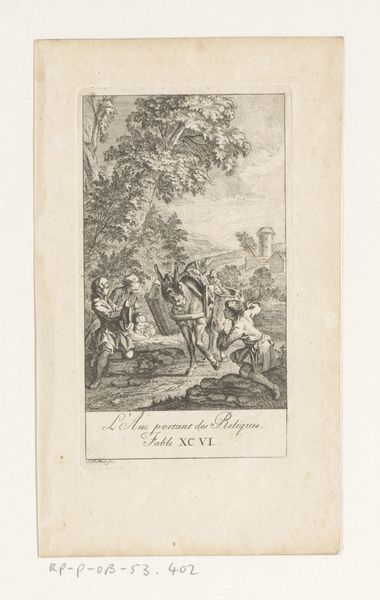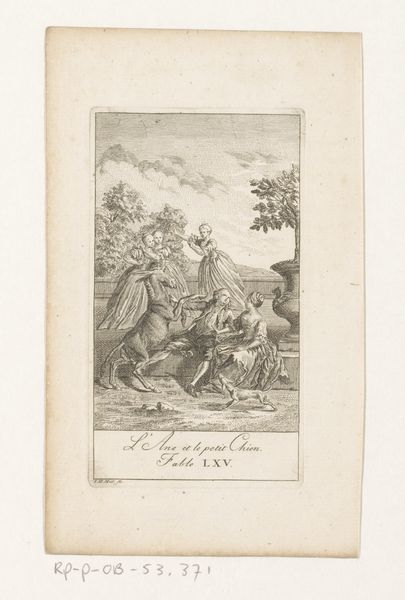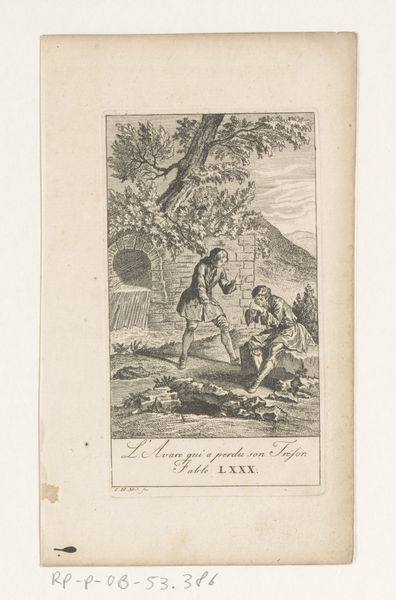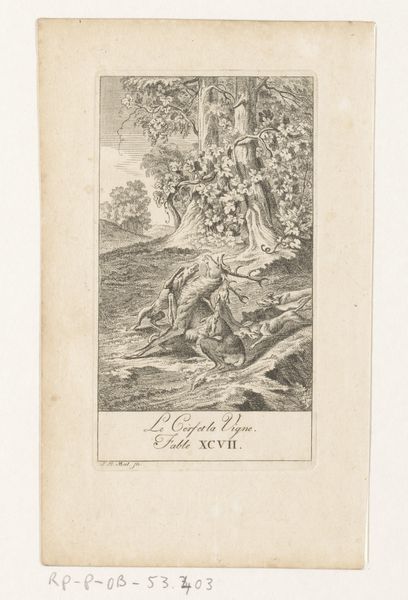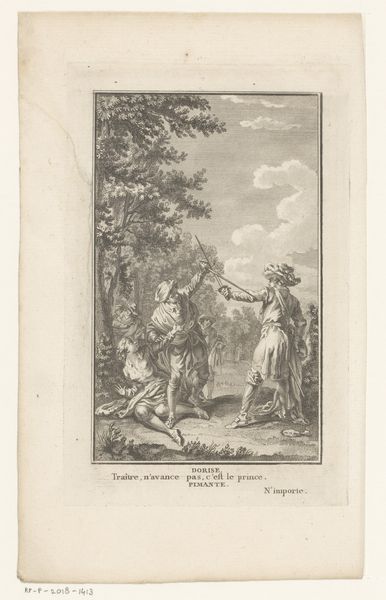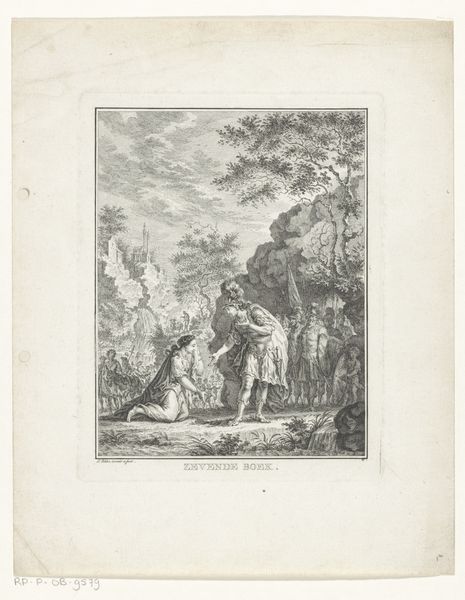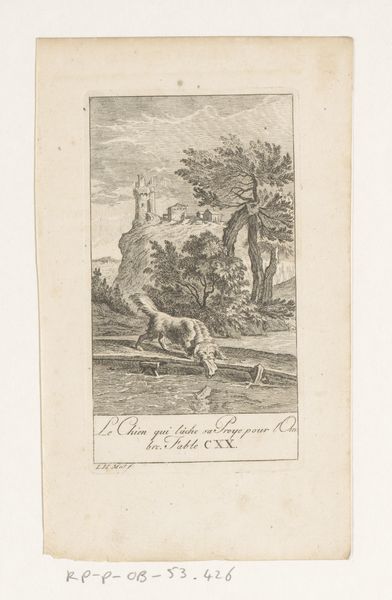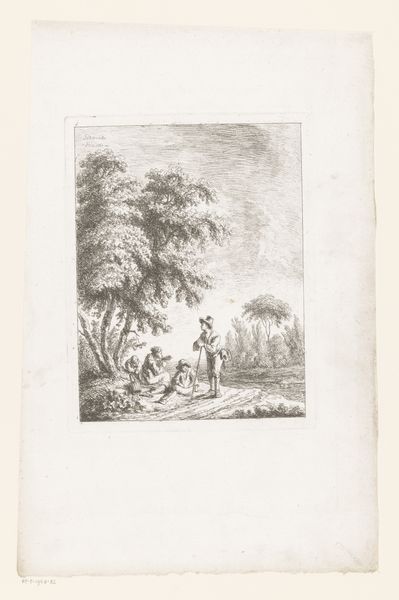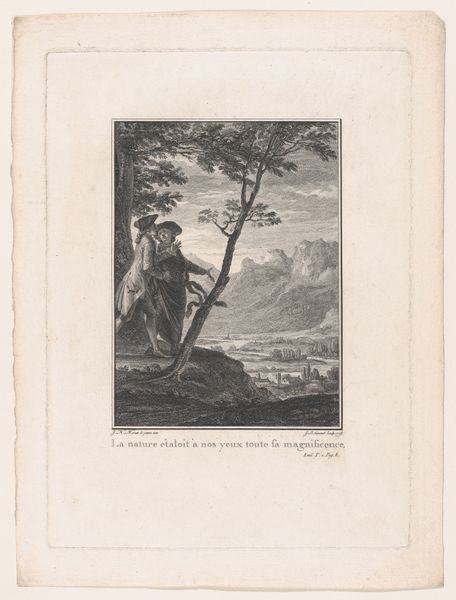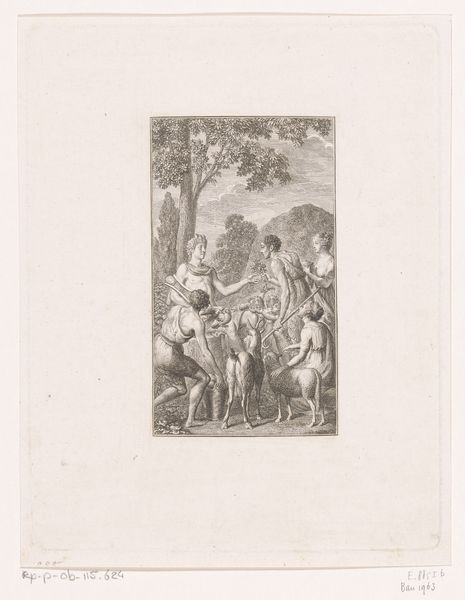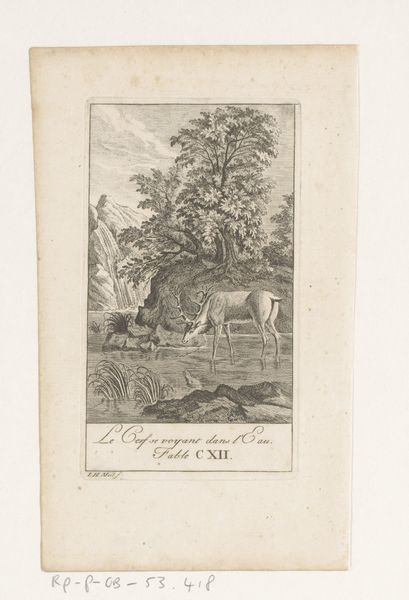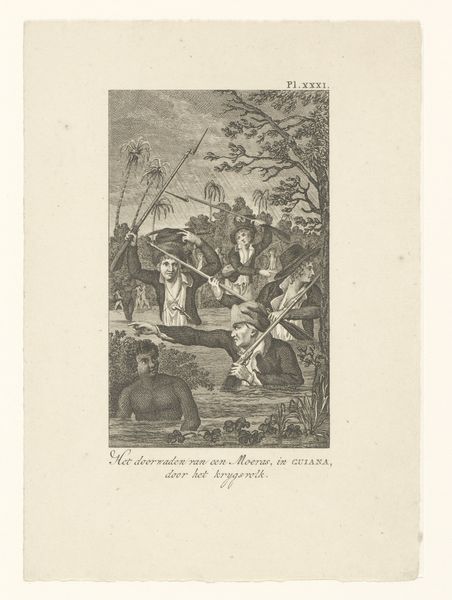
drawing, print, etching, engraving
#
drawing
# print
#
etching
#
landscape
#
genre-painting
#
engraving
Dimensions: height 142 mm, width 81 mm
Copyright: Rijks Museum: Open Domain
Editor: Here we have Johann Heinrich Meil's 1758 engraving, "Fabel van de vastgelopen boerenkar," which translates to "Fable of the Stuck Farmer's Cart." It depicts peasants struggling with a hay-filled cart, seemingly mired in mud. It feels like it’s capturing a very specific, difficult moment in rural life. What’s your perspective on this piece? Curator: I find it fascinating to examine this etching through the lens of its production. Consider the material conditions of 18th-century printmaking. Meil is using etching and engraving, techniques requiring significant labor and skill. The resulting prints would have been disseminated widely, carrying this "genre painting" – a scene of everyday life – into various homes. Does it challenge your initial interpretation by acknowledging how it was consumed? Editor: Absolutely. Thinking about it as a mass-produced image for consumption changes my understanding. The scene now reads less as a purely sympathetic portrayal and more as…well, perhaps a product made for an urban, more privileged audience? A commodified version of rural hardship? Curator: Precisely. The 'fable' element is key, and perhaps less about portraying their literal condition. Look at the composition: the overloaded cart, the strained posture of the laborers. The very *making* of the image serves to highlight labor—both the represented agricultural toil, and Meil's meticulous handiwork. What statement do you think Meil is making through material and process? Editor: I see that Meil’s not just showing labor, he's performing it, creating an object of labor for consumption! Maybe he’s prompting viewers to consider the human cost embedded in the very things they consume: images, stories, food…everything. Curator: Exactly! And hopefully it leads to considering larger social and economic contexts. Editor: I’ll never look at an 18th century print the same way.
Comments
No comments
Be the first to comment and join the conversation on the ultimate creative platform.
